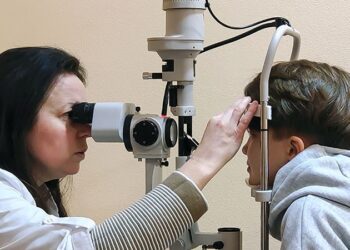Transgender women are more likely to experience injuries — often to the head, face, and chest — compared with cisgender women, according to a case-control study.
Among the 263 included transgender women, 67 sustained 141 injuries compared with 77 of 525 cisgender women who sustained 98 injuries, reported Rohan Chopra, an undergraduate student at Northeastern University and a research intern at the Trauma Imaging Research and Innovation Center at Brigham and Women’s Hospital in Boston, during the Radiological Society of North America annual meeting.
Transgender women suffered eight times as many head injuries, 36 times as many facial injuries, and five times as many chest injuries.
Of the transgender women with injuries confirmed by a radiological exam, 41.8% reported being involved in interpersonal violence and 28.4% reported intimate partner violence, though 37.3% were not screened for intimate partner violence, Chopra said.
He also noted that transgender women were five times more likely to undergo imaging in the emergency department compared with cisgender women and were nearly twice as likely to undergo imaging overnight and on weekends.
“On a positive note, however, radiologists demonstrated a positive predictive value of 67% in identifying violence when they suspected intimate partner violence among transgender female patients,” Chopra said.
Transgender individuals, especially transgender women, are known to experience higher rates of violence. In addition to intimate partner violence, they often face various other forms of interpersonal violence, including discrimination, hate crimes, psychological abuse, and social isolation, the researchers noted.
“Furthermore, when transgender individuals seek help, they frequently encounter additional discrimination from shelters, from law enforcement, and from healthcare providers,” he added. “These barriers perpetuate severe health disparities and can increase dependence on violent partners, making it more challenging for individuals to escape the cycle of unaddressed and escalating violence.”
Co-author Bharti Khurana, MD, founder and director of the Trauma Imaging Research and Innovation Center, noted that “the significantly higher injury rates in transgender women, particularly to the head, face, and chest, with frequent presentations to emergency departments indicate an elevated risk of violence and highlight gaps in preventive care.”
“By recognizing these patterns, radiologists can help identify at-risk patients and facilitate timely intimate partner violence screening and support for this vulnerable population,” she added.
Chopra said the goal of the research “was to make the invisible visible by comparing injuries between transgender and cisgender women using radiology reports.”
The researchers used their institution’s patient registry to create a cohort of 263 transgender women and a rigorously matched cohort of 525 cisgender women based on age, race, and ethnicity to minimize potential confounding effects. All patients had undergone at least one imaging exam at a Massachusetts General Brigham-affiliated hospital.
Two radiologists, blinded to the purpose of the study and transgender status, were asked to predict the likelihood of intimate partner violence based on the radiology reports.
Disclosures
Chopra and Khurana disclosed no relevant relationships with industry.
Primary Source
Radiological Society of North America
Source Reference: Chopra R, et al “Analyzing the prevalence of injury and violence in transgender patients using radiology reports” RSNA 2024.
Source link : https://www.medpagetoday.com/meetingcoverage/rsna/113268
Author :
Publish date : 2024-12-06 20:37:42
Copyright for syndicated content belongs to the linked Source.


![author['full_name']](https://newshealth.biz/wp-content/uploads/2024/12/Transgender-Women-More-Likely-to-Suffer-Injuries-Than-Cisgender-Women.jpg)












